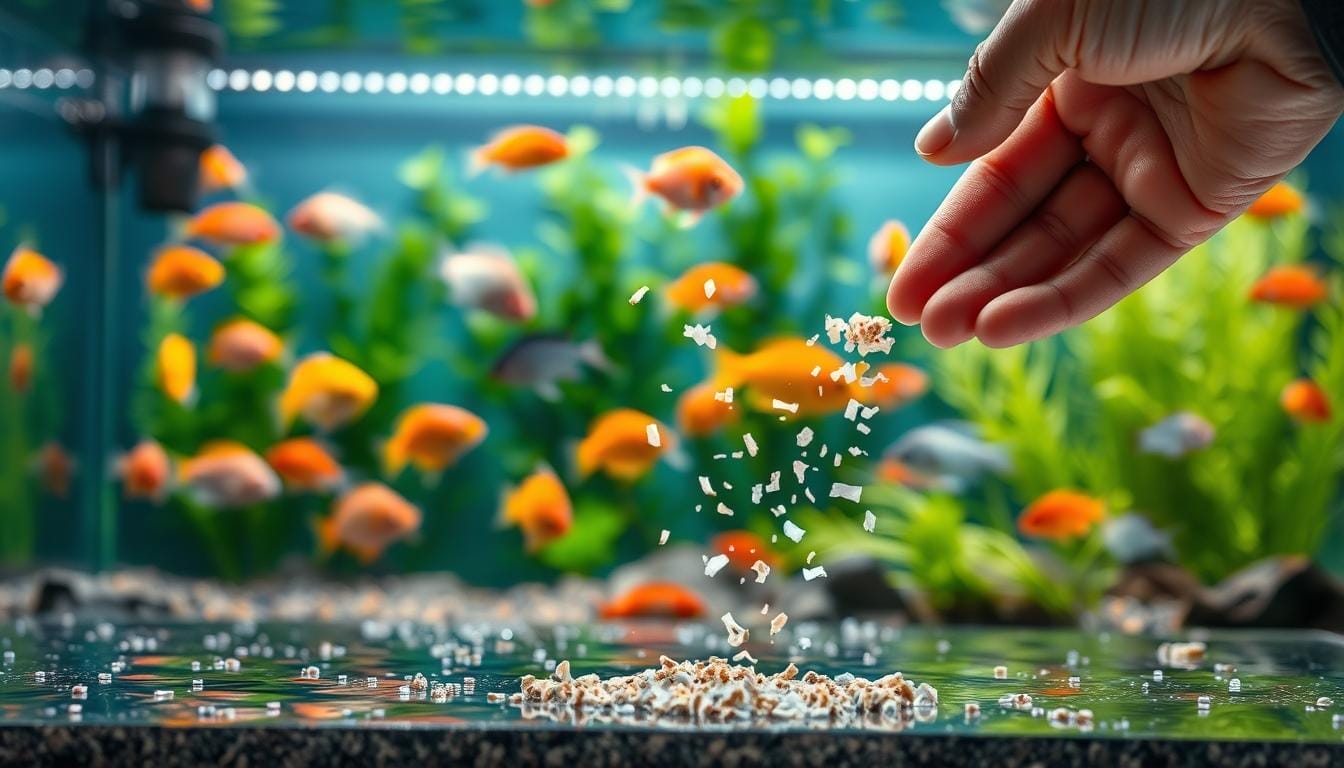
Livebearers Breeding: Tips for Successful Fish Raising
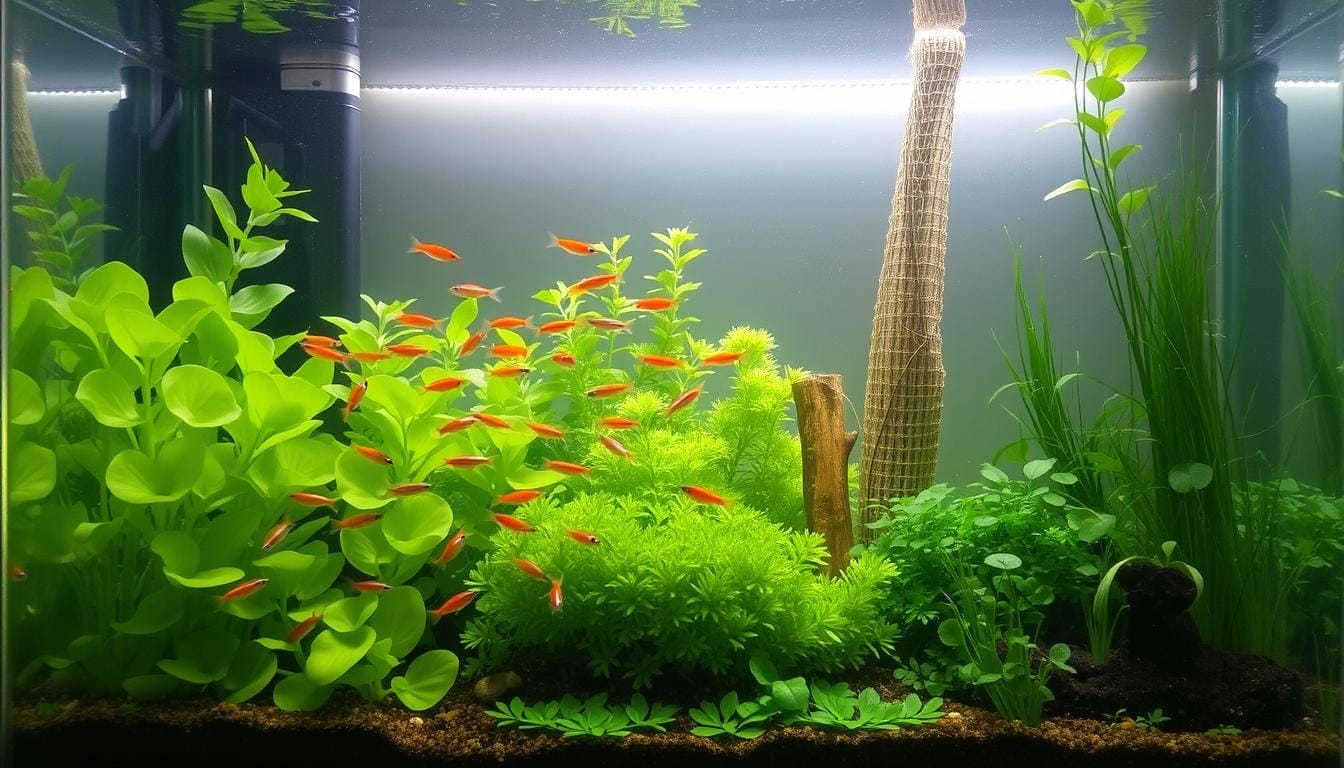
Did you know a single aquarium can yield over 200 fry monthly with the right approach? While many assume raising colorful fish like guppies and platies is as simple as filling a tank, scaling up requires strategy. This guide shows you how to turn a modest setup into a thriving aquatic nursery—no ponds or endless equipment needed.
You’ll learn techniques used by seasoned hobbyists to maximize productivity without breaking the bank. We focus on smart tank management, water quality hacks, and creating ideal conditions for your aquatic family to flourish. Whether you’re a first-time fish keeper or looking to expand your skills, these methods adapt to any space or budget.
Why choose these species? They’re nature’s overachievers—hardy, adaptable, and quick to multiply. With proper care, your aquarium becomes a self-sustaining ecosystem. Imagine trading surplus fish for store credit or sharing your success at local aquarium clubs!
This isn’t just about growing fish—it’s about cultivating confidence. We’ll help you avoid overcrowding pitfalls and create a system that practically runs itself. Ready to transform your tank into a vibrant underwater community? Let’s dive in.
Choosing High-Quality Starter Fish
Your breeding success starts with selecting fish that look vibrant, healthy, and true to their species. Like picking athletes for a team, you want parents that showcase peak colors and flawless body shapes. Take time to inspect each candidate under bright lighting—side views reveal fin quality, while top-down checks expose spinal alignment issues.
Spotting Prime Physical Traits
Look for smooth scales and symmetrical fins when choosing guppies or mollies. Avoid fish with faded colors, torn tails, or irregular swimming patterns—these often indicate hidden health issues. Top breeders recommend quarantining new arrivals for two weeks to confirm their vitality before introducing them to your main tank.
Balancing Your Breeding Group
Start with three females for every male to prevent exhaustion. A 6-fish group (2 males + 4 females) works better than minimal trios, letting females recover between pregnancies. For species like swordtails, increase female numbers further—their energetic males need more companions to distribute attention.
Pro tip: Young females under three months old adapt quicker to new environments. Pair them with mature males displaying full coloration for optimal results. This combination jumpstarts fry production while maintaining genetic diversity.
Setting Up an Optimal Breeding Tank
Your tank’s design determines whether fry thrive or become snacks. Colony systems let young fish grow safely with adults through strategic environmental planning. This approach cuts equipment costs while creating a balanced ecosystem where multiple generations coexist.
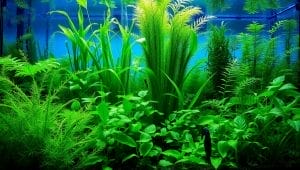
Creating a Dense Cover with Live Aquarium Plants
Thick vegetation acts like an underwater fortress for newborns. Water sprite’s feathery leaves and octopus plant’s curling stems form impenetrable barriers. Java moss works wonders too—its tangled growth hides fry while trapping microscopic food particles.
Arrange plants in layered clusters rather than neat rows. You want overlapping leaves that create maze-like pathways. Test your setup: if you can spot open spaces through the greenery, add more stems. Live roots also absorb ammonia, keeping water safer between changes.
Ensuring Proper Filtration and Water Changes
Sponge filters are fry-friendly heroes. Their bubbly flow oxygenates water without creating dangerous suction. For hang-on filters, wrap intake tubes with coarse sponges—this blocks tiny fish while letting debris through.
Change 20% of the water weekly using a turkey baster to siphon waste from plant bases. Stable conditions prevent stress spikes that harm developing fish. Pair this routine with floating plants—they’ll filter nitrates naturally between maintenance sessions.
Mastering Livebearers Breeding Methods
Transforming your aquarium into a thriving nursery requires smart system choices. Three proven approaches balance space, effort, and results—each with unique benefits for different skill levels.
Natural Colony Development
Colony setups let multiple generations coexist safely. Dense plant cover and clever tank layouts create hiding spots where fry mature naturally. This method cuts equipment costs by 60% compared to multiple tanks while maintaining stable water conditions.
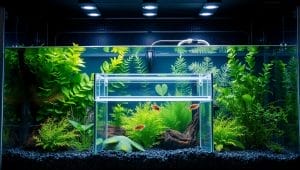
Targeted Protection Strategies
Plastic isolation units offer temporary safety for newborns. These clever containers let mothers deliver in peace while keeping hungry adults at bay. The best models feature:
- Adjustable dividers for multiple females
- Slotted floors for waste control
- Smooth edges to prevent fin damage
Dedicated grow-out tanks yield faster results for serious enthusiasts. Though requiring extra equipment, they let you control feeding schedules and water parameters precisely. Cycle these spaces alongside your display tank to ensure readiness when needed.
Pro tip: Start with colony breeding to learn fish behavior patterns. Gradually introduce isolation methods as your confidence grows. This phased approach helps maximize success without overwhelming your budget or schedule.
Nutrition and Feeding for Successful Fry Growth
Proper meals make all the difference in transforming tiny fry into robust juveniles. Your feeding strategy must balance nutritional density with accessibility, ensuring every mouth-sized morsel reaches its target.
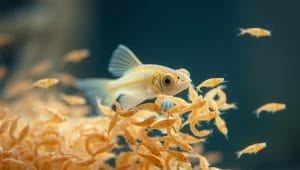
Power Up With Protein-Rich Options
Newborns thrive on live baby brine shrimp—their wiggling motion triggers natural hunting instincts. These nutrient-packed snacks contain 60% protein, perfect for rapid development. Alternate with crushed flakes and powdered spirulina to create varied menus.
Automatic feeders become your secret weapon. Program them to dispense micro-portions 4x daily while you’re away. This keeps adults occupied with constant grazing, reducing their interest in smaller tankmates.
Timing Is Everything
Hand-feed at dawn and dusk when fry are most active. Morning sessions let you check water clarity, while evening feedings help spot uneaten food needing removal. Pair this routine with midday auto-feeds for non-stop nourishment.
Pro tip: Add cherry shrimp colonies. These busy cleaners devour leftovers while serving as mobile snack stations. Their constant movement encourages fry to explore beyond plant cover, building confidence and hunting skills.
Watch for plump bellies and vibrant colors—your sign that the menu works. Adjust quantities gradually, remembering: better five tiny meals than two large portions that pollute the water.
Maintaining Water Quality and Tank Health
Crystal-clear water isn’t just beautiful—it’s your fish’s lifeline. Tropical species thrive when their environment mimics natural habitats. Let’s explore how to sustain ideal conditions without constant fuss.
Managing Water Temperature, pH, and Ammonia Levels
Keep your heater set between 75-81°F for active, healthy fish. Test your tap water first—many municipal supplies already hit the ideal pH of 7-8. Use liquid test kits weekly to catch ammonia spikes before they stress your aquatic friends.
Notice rapid gill movement or faded colors? Check ammonia levels immediately. Pair sponge filters with live plants to naturally absorb nitrates. Remember: overfeeding causes 80% of water quality issues. Scoop uneaten food within two hours.
Implementing Regular Water Changes and Supplement Dosing
Weekly 25% water changes remove hidden toxins. Use a gravel vacuum to target waste trapped under plants. For hard water species, add crushed coral or mineral supplements during changes. This maintains stable hardness above 10dH without daily monitoring.
Pro tip: Mark your calendar for monthly filter maintenance. Rinse media in tank water—never tap—to preserve beneficial bacteria. Your consistent care creates a self-regulating ecosystem where fish flourish effortlessly.
FAQ
How many males should I keep with females to prevent stress?
Aim for a 1:3 male-to-female ratio. This reduces harassment and gives females space to recover between pregnancies. Overcrowding males can lead to fin nipping or exhaustion in females.
Do I need real plants in my breeding setup?
Yes! Java moss, hornwort, or floating plants like duckweed provide essential hiding spots for fry. They also improve water quality by absorbing nitrates and offer natural grazing surfaces for baby fish.
How often should I replace water in fry tanks?
Perform 25% water changes every 2-3 days using a drip method. Always treat tap water with Seachem Prime® to neutralize chlorine. Smaller tanks require more frequent changes to control ammonia spikes.
Are breeding traps harmful to pregnant fish?
Use traps only for short periods (under 48 hours). Prolonged confinement stresses mothers. For safer results, try a divided tank with sponge filters or a densely planted “drop-off” area where fry can escape adults naturally.
What’s the best first food for newborn fry?
Hatch live baby brine shrimp using an Instant Ocean® setup – their movement triggers feeding instincts. Supplement with powdered spirulina or crushed flake food for round-the-clock nutrition.
Can I maintain stable temperatures without a heater?
A> While guppies tolerate 72-82°F, a reliable heater like the Eheim Jager® prevents dangerous swings. Consistent warmth (78°F ideal) boosts metabolism for faster growth and reduces disease risks in developing fry.
How do I spot ammonia issues early?
Test kits like API Master Kit® are essential. Cloudy water, gasping fish, or red gills signal trouble. Add live plants, reduce feeding, and dose beneficial bacteria (like Stability®) during tank cycling.





